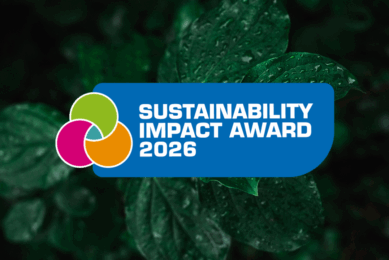Sustainable feed critical to meeting global climate targets

Implementing sustainable practices within the livestock and poultry feed sectors and throughout the value chain is crucial to limiting warming to 1.5 degrees, according to a report from the World Wildlife Fund (WWF).
Animal-sourced foods currently account for 11% of global greenhouse gas emissions, 12% of global freshwater consumption and have been responsible for 65% of global land use change between 1961 and 2011
The report explains how the US animal feed industry and supply chain partners can implement changes that will reduce the environmental impacts of feed production and help lead to a more sustainable and climate-resilient global food system.
Sustainable feed strategy
The study outlines how these issues can be addressed through 4 component of a sustainable feed strategy – circularity, innovation, regenerative agriculture and responsible sourcing. It also includes insights and examples shared by stakeholders during a recent Feed Systems Sustainability Summit, convened with the Institute for Feed Education and Research (FEEDER).
The report, “Solutions to Meet the Need for Feed”, admits animal feed is a particularly challenging sustainability issue to address due to a fragmented supply chain targeting multiple species. Complex feed systems provide diverse nutrient sources for livestock and poultry, including raw ingredients, processed materials, co- or by-products and leftovers. Risk to feed production due to increased extreme weather events and water constraints may further impact the efficiency, consistency and quality of feed production.
Depending on the species, feed accounts for 20-60% of total emissions in US production systems yet demands signals for more sustainable feed ingredients and rations are not reaching all parties in the supply chain, says the report, which also calls for action on supply and demand market signals. It wants to see a culture of increased feed ingredient transparency and traceability, with cross-sector sharing of data, best practices and lessons learned.
Potential solutions
Addressing what changes are needed in the fee sector, the report highlights 4 solutions:
- Responsible Sourcing: This can halt land conversion in supply chains, thereby protecting valuable carbon stores in critical ecosystems and normalise the integration of environmental impact evaluation into feed formulation decision making.
- Regenerative Agriculture: Interventions in this area can lead to multiple environmental benefits, such as biodiversity, water use and soil health, as well as supporting local producers and communities. They are key in both carbon sequestration and emissions mitigation because of the linkage to cropping system’s nutrient needs (eg carbon, nitrogen, phosphorus and water)
- Circular ingredients: These reduce pressure on both landfills and land for crop production by utilising already available “niche”, novel and alternative ingredients with important nutritional and/or functional health attributes. Leadership and actions are needed to further quantify the impact and scale of available ingredients in an economically feasible way while maintaining quality and safety standards.
- Feeding innovations: Greater innovation is needed to reduce the footprint of animal production through enhanced efficiency and health, and/or by lowering emissions from manure and enteric fermentation. This includes enhanced ration formulation, ingredient development, equipment and manufacturing models that provide unique incentives for changing practices.
Right now there is a unique opportunity for the feed industry to leverage its influence and effect worldwide change.
Ellen Dierenfeld, lead specialist for sustainable feed innovations at WWF, said a critical part of the conversation needed to be how to supply environmentally responsible animal feed: “Right now there is a unique opportunity for the feed industry to leverage its influence and effect worldwide change. Collective action across the feed value chain would send market signals rippling through the entire agriculture sector, leading to a more sustainable food system for everyone.”
Lara Moody, IFEEDER executive director, added: “Actionable solutions exist, but signals and support from the full feed value chain including feed stuff producers and consumer facing stakeholders are needed.”
One company that is addressing some of these issues is Trouw Nutrition, which last month (March), launched an online service, MyFeedPrint, to calculate the environmental footprint of animal feed products. The service is designed to allow farmers, feed producers and integrators to quantify the environmental footprint of animal feed, providing transparency on the environmental impact of the livestock value chain.
It will allow feed producers to uncover their environmental hotspots and priorities the lowest-impact strategies to ensure their operations can continue to run profitably and sustainably. Based on the results of the MyFeedPrint analysis, producers can calculate more environmentally conscious choices to enhance their products and make informed decisions about how to achieve lower impact solutions.
Wiebren Santema, Trouw Nutrition digital product manager, said the product set a new standard in value chain transparency for the livestock industry, providing the missing link between farms, feed producers and end consumers that would prove pivotal in driving a more sustainable future for food production.











